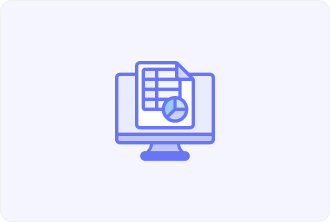Design Description Definition

Design Description — a document or a set of documents describing a design, architecture and components, interfaces, and data. These outline how each specific one functions to cater to stipulated requirements.
Design description provides the developer with a diagram while developing the system to get all the components in a smooth working condition with each other. It represents both functional and non-functional requirements in an organized manner to implement by developers to make a system. It usually consists of diagrams or models as visual aids representing the architecture and interactions between different building blocks in the system.
The design descriptions also state the database design for the system, including schema definitions, and enumerate the algorithms and data structures that will be used. The details of the design of the user interface, security of the systems, and performance criteria, are also given.
Such a created document bridges a gap between the vendor and customer, ensuring they sing the same symphony and share the vision of future design and creation. For instance, you are able to include the objectives to reach, components for design, maintain efforts, and more.
If you are cooperating with a custom software development company in the UK like ours, they are ensuring to offer this document according to your needs, for better communication. We use some proven practices to make it useful and efficient, staying strict to explaining all the creation and designing stages, our initial sprints, and more.
What are the benefits of Design Description?
To put it simply, starting the project without pre-defining needs makes it clear as mud as you bring not a clear vision but the lack of clarity, fewer engagement of the design team, no connection between departments. If you hire a skilled web developer, they will indicate why Design Description is crucial, as they bring the following advantages:
-
Well-formated reference. It is like you start to work on the project with a clear picture in mind, and every aspect of design is conducted according to this view which reduces miscommunication between developers and designers as well as with a client.
Therefore, all the visuals are put in the correct order, and simultaneously you will be able to quickly review the design and decide if it matches the plan. Further, you will make updates with an orientation of what you have now.
-
Reduced unplanned changes. Sometimes, when ideas for new implementations come through all the designing way, it brings hardless, so Design Description will minimize it, as you will see the whole picture and understand if you really need these changes.
It keeps all the group of experts focused on decisions that matter, for example, when you are reviewing a page design, and suddenly think about adding a pop-up, but you see that according to the plan, it will not work out here, so you skip it.
- Better end-users satisfaction. With design in mind, you make the one that is easy to use and is visually appealing for users’ preferences. For instance, the top SaaS development companies we considered in the material deliver such a set of docs which allows you to receive a SaaS solution, a cloud-one, which is well-considered.
How to make a Design Description?
Also known as brief, such a document is crucial for your well-established project plan, so let’s consider 4 steps to take when creating a Design Description:
Stage 1. Answer your “Whys”
How do you imagine the scope of product needs in terms of design? Why is it important? What pain points will you cover with this solution?
Stage 2. Define nuances
It will help you to determine objectives, audience preferences, features and components to build, your budget capabilities, and deadlines which sounds like a lot to do, and it is. Moreover, it is preferable to cooperate with coders and other specialists, for example, how it is done within web development companies across the UK and other countries.
Step 3. Align them with your brand
This point is not about features but about your values and standards that are represented across your presence in online world: from custom palettes that are about to influence the mood of your visitors and customers to performance elements like icon size, movements, and so on.
Step 4. Write it down
For now, you are ready to work on the actual document and categorize plus structure all the things you discussed with your team, from business goals to competitors and challenges.
Keep in mind that your core purpose is to make everything clear when it comes to collaboration between you and the designers, programmers, and even project managers as well as maintaining the highest quality of your product.
WIth a pre-defined strategy (which is written/typed on a paper) you will navigate your project through the storm of designing process, improve the final quality and make users satisfied.